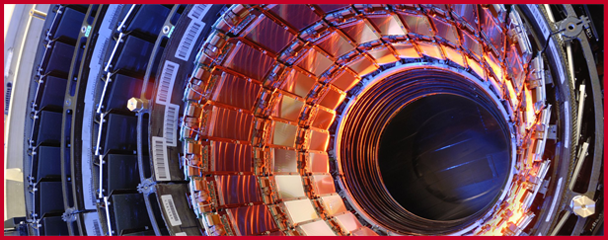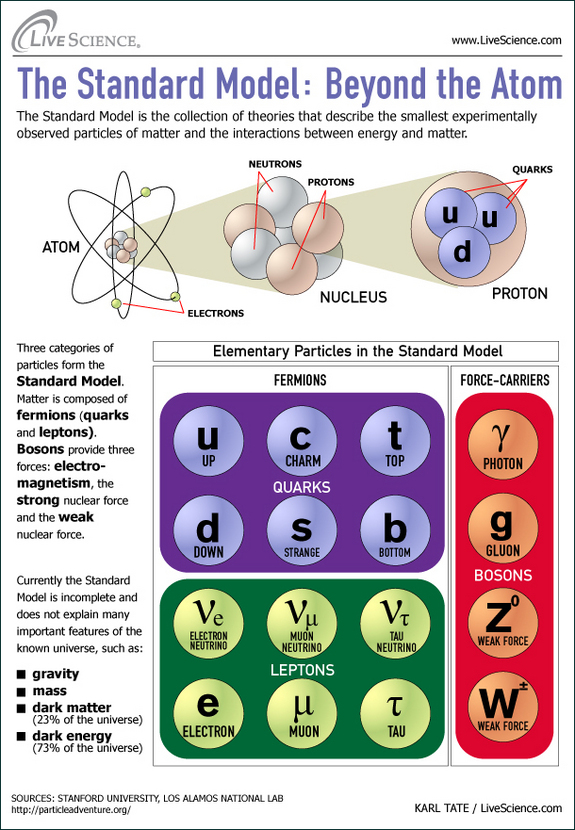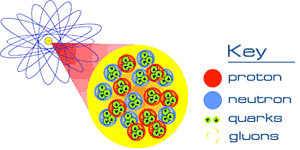
Particle physics is described and explained by the 'standard model', which defines particles and their nuclear interactions. Each particle does a particular thing, and interacts in different ways.

This graphic does a really good job of visually explaining what on earth is going on:

To detect particles such as neutrinos, physicists use bubble chambers - big vats of a substance that particles pass through and leave trails. Bubble chambers produce beautiful visual representations of particle trajectories through different mediums. The background for this site is a representation of the tracks made by a particle as it travels through a bubble chamber.
(Back to top)
The Standard Model has a defined number of key particles: elementary and composite (def). Elementary particles are quarks, leptons and bosons. These particles then join together to create the more well-known particles, such as the neutron and the proton. Such particles are known as composite particles, as they are composed of two or more of these elementary particles.
A quark is an elementary particle and a fundamental constituent of matter. Quarks combine to form particles called hadrons (the most stable of which are protons and neutrons). Quarks cannot be observed outside of hadrons. There are six types of quarks, known as flavours: up, down, strange, charm, bottom, and top.
In the Standard Model, gauge bosons are force carriers. They are mediators of the strong, weak, and electromagnetic fundamental interactions.
A lepton is an elementary particle and a fundamental constituent of matter. The best known of all leptons is the electron. The two main classes of leptons are charged leptons (also known as the electron-like leptons), and neutral leptons (better known as neutrinos).
(Back to top)
The Higgs boson has gained quite a lot of attention in the media recently. It was initially a 'theoretical particle' that scientists were hunting for at CERN. However, during a press conference on 7th July 2012, the scientists announced that they had discovered a new particle where they expected to find the Higgs. This new particle exhibited characteristics that were inkeeping with the Higgs boson - so watch this space!
(Back to top)


